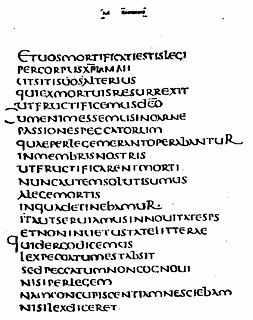Related Research Articles

Charles Francis Hockett was an American linguist who developed many influential ideas in American structuralist linguistics. He represents the post-Bloomfieldian phase of structuralism often referred to as "distributionalism" or "taxonomic structuralism". His academic career spanned over half a century at Cornell and Rice universities. Hockett was also a firm believer of linguistics as a branch of anthropology, making contributions that were significant to the field of anthropology as well.
Leonard Bloomfield was an American linguist who led the development of structural linguistics in the United States during the 1930s and the 1940s. He is considered to be the father of American distributionalism. His influential textbook Language, published in 1933, presented a comprehensive description of American structural linguistics. He made significant contributions to Indo-European historical linguistics, the description of Austronesian languages, and description of languages of the Algonquian family.
Animal languages are forms of non-human animal communication that show similarities to human language. Animals communicate by using a variety of signs such as sounds or movements. Such signing may be considered complex enough to be called a form of language if the inventory of signs is large, the signs are relatively arbitrary, and the animals seem to produce them with a degree of volition. In experimental tests, animal communication may also be evidenced through the use of lexigrams.
Semantic memory refers to general world knowledge that humans have accumulated throughout their lives. This general knowledge is intertwined in experience and dependent on culture.
Higher order grammar (HOG) is a grammar theory based on higher-order logic. It can be viewed simultaneously as generative-enumerative or model theoretic.

The Ada Semantic Interface Specification (ASIS) is a layered, open architecture providing vendor-independent access to the Ada Library Environment. It allows for the static analysis of Ada programs and libraries. It is an open, published interface library that consists of the Ada environment and their tools and applications.

In linguistics, a word of a spoken language can be defined as the smallest sequence of phonemes that can be uttered in isolation with objective or practical meaning. In many languages, words also correspond to sequences of graphemes ("letters") in their standard writing systems that are delimited by spaces wider than the normal inter-letter space, or by other graphical conventions. The concept of "word" is usually distinguished from that of a morpheme, which is the smallest unit of word which has a meaning, even if it will not stand on its own together or in other small words.
Semantic similarity is a metric defined over a set of documents or terms, where the idea of distance between items is based on the likeness of their meaning or semantic content as opposed to lexicographical similarity. These are mathematical tools used to estimate the strength of the semantic relationship between units of language, concepts or instances, through a numerical description obtained according to the comparison of information supporting their meaning or describing their nature. The term semantic similarity is often confused with semantic relatedness. Semantic relatedness includes any relation between two terms, while semantic similarity only includes "is a" relations.
Potawatomi is a Central Algonquian language. It was historically spoken by the Pottawatomi people who lived around the Great Lakes in what are now Michigan and Wisconsin in the United States, and in southern Ontario in Canada. Federally recognized tribes in Michigan and Oklahoma are working to revive the language.
In linguistics, double articulation, duality of patterning, or duality is the fundamental language phenomenon consisting of the use of combinations of a small number of meaningless elements to produce a large number of meaningful elements. Its name refers to this two-level structure inherent to sign systems, many of which are composed of these two kinds of elements: 1) distinctive but meaningless and 2) significant or meaningful.
A semantic wiki is a wiki that has an underlying model of the knowledge described in its pages. Regular, or syntactic, wikis have structured text and untyped hyperlinks. Semantic wikis, on the other hand, provide the ability to capture or identify information about the data within pages, and the relationships between pages, in ways that can be queried or exported like a database through semantic queries.
A speech error, commonly referred to as a slip of the tongue or misspeaking, is a deviation from the apparently intended form of an utterance. They can be subdivided into spontaneously and inadvertently produced speech errors and intentionally produced word-plays or puns. Another distinction can be drawn between production and comprehension errors. Errors in speech production and perception are also called performance errors. Some examples of speech error include sound exchange or sound anticipation errors. In sound exchange errors the order of two individual morphemes is reversed, while in sound anticipation errors a sound from a later syllable replaces one from an earlier syllable. Slips of the tongue are a normal and common occurrence. One study shows that most people can make up to as much as 22 slips of the tongue per day.
Articulatory gestures are the actions necessary to enunciate language. Examples of articulatory gestures are the hand movements necessary to enunciate sign language and the mouth movements of speech. In semiotic terms, these are the physical embodiment (signifiers) of speech signs, which are gestural by nature.
Traditional transmission is one of the 13 design features of language developed by anthropologist Charles F. Hockett to distinguish the features of human language from that of animal communication. Critically, animal communication might display some of the thirteen features but never all of them. It is typically considered as one of the crucial characteristics distinguishing human from animal communication and provides significant support for the argument that language is learned socially within a community and not inborn where the acquisition of information is via the avenue of genetic inheritance.
In linguistics, displacement is the capability of language to communicate about things that are not immediately present ; i.e., things that are either not here or are not here now.
Vocal-auditory channel is the first of 13 design features proposed by Charles F. Hockett in characterizing human language and distinguishing it from animal communication. It describes the way vocal signals can be used to produce language. The speaker uses a vocal tract to produce speech sounds, and the hearer employs an auditory apparatus to receive and process the speech sounds. This is why human language is said to be based on speech sounds produced by the articulatory system and received through the auditory system. The vocal channel is a particularly excellent means through which speech sounds can be accompanied or substituted by gestures, facial expressions, body movement, and way of dressing. However, Hockett considers this design feature one which is fundamentally advantageous for primates as "it leaves much of the body free for other activities that can be carried on at the same time."
Reflexiveness is one of Charles Hockett's 16 Design features of language which states that in a language the speaker can use their language to talk about language. Speakers of a language are able to have knowledge about their language and be able to reflect upon it.
Complete Feedback is one of Charles Hockett's 16 Design features of language which states that speakers are able to hear what they are saying. Through their auditory channels they are able to receive feedback on what they are vocalizing.
Hockett's Design Features are a set of features that characterize human language and set it apart from animal communication. They were defined by linguist Charles F. Hockett in the 1960s. He called these characteristics the design features of language. Hockett originally believed there to be 13 design features. While primate communication utilizes the first 9 features, the final 4 features are reserved for humans. Hockett later added prevarication, reflexiveness, and learnability to the list as uniquely human characteristics. He asserted that even the most basic human languages possess these 16 features.
Semantic Scholar is an artificial-intelligence backed search engine for academic publications developed at the Allen Institute for AI and publicly released in November 2015. It uses advances in natural language processing to provide summaries for scholarly papers. The Semantic Scholar team is actively researching the use of artificial-intelligence in natural language processing, machine learning, Human-Computer interaction, and information retrieval.
References
- ↑ Hockett, C. F. (1960) "The origin of speech". Scientific American, 203:2.